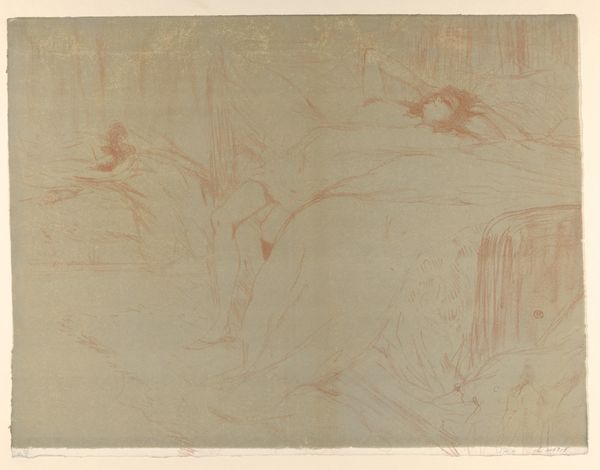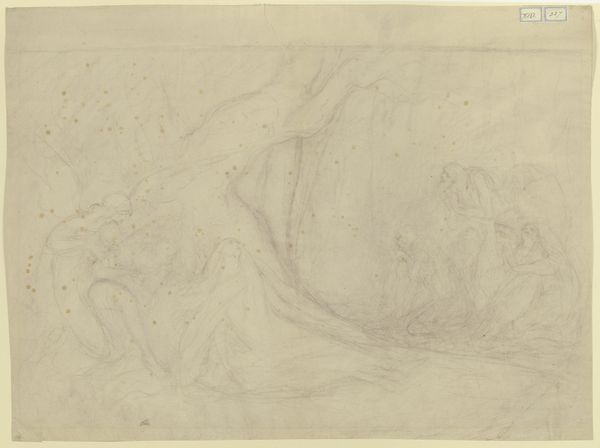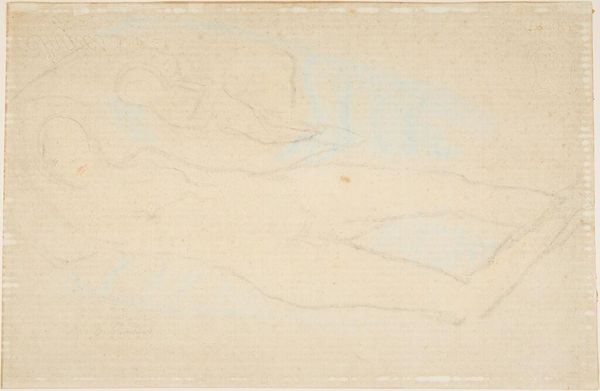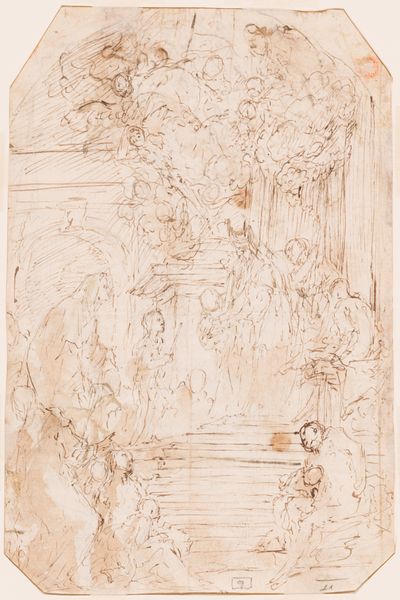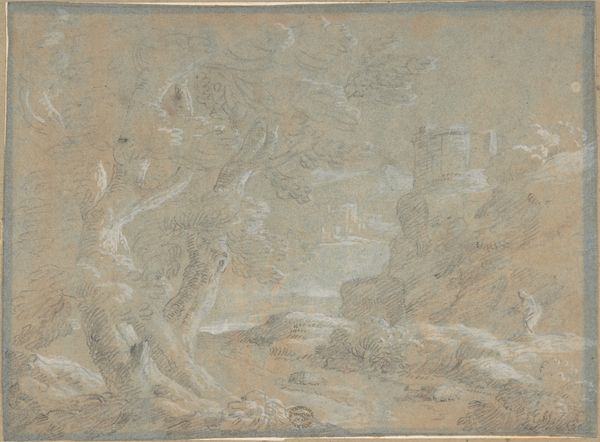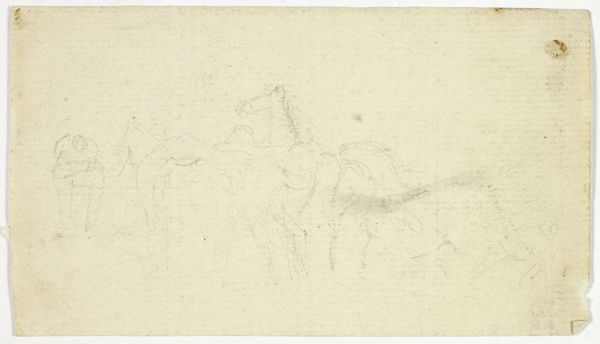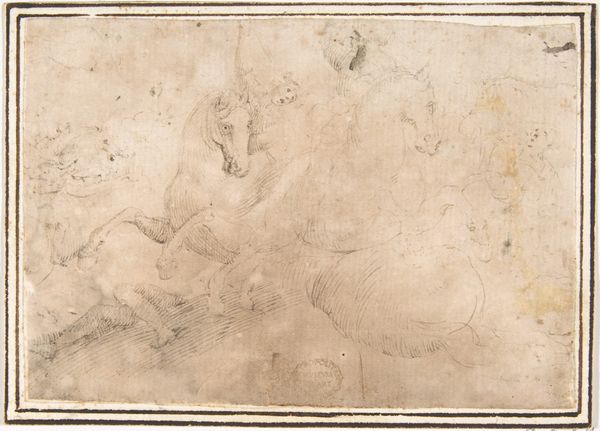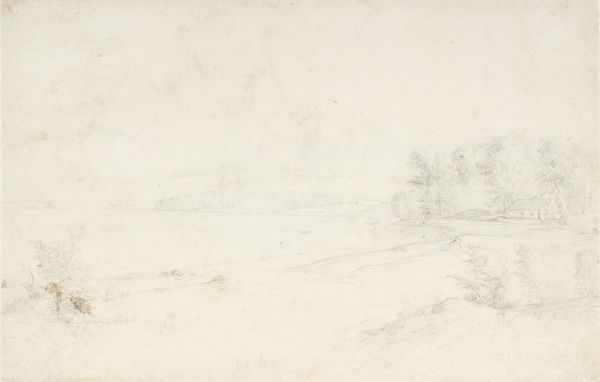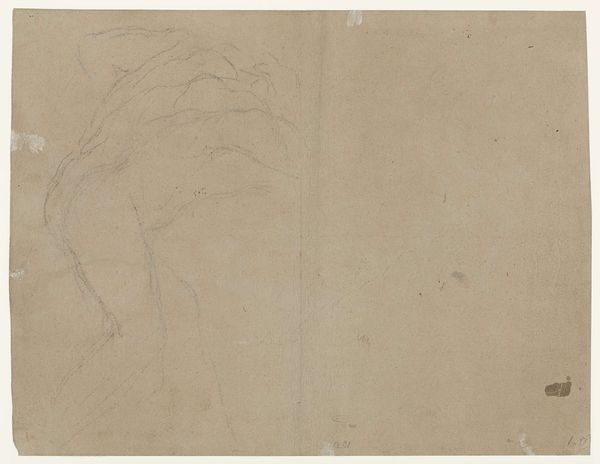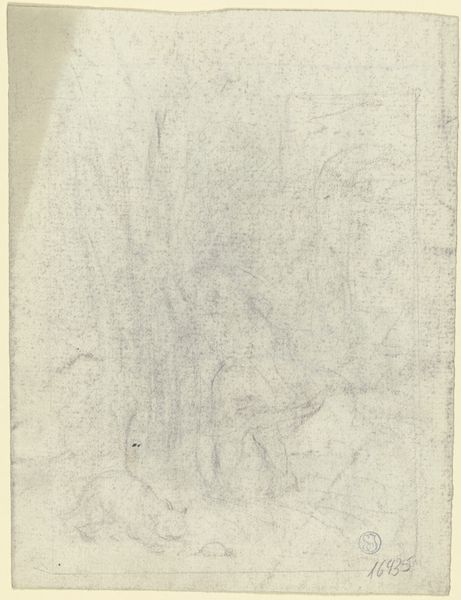
Dimensions: 402 mm (height) x 523 mm (width) (bladmaal)
Curator: Oh, that’s quite striking! At first glance, there’s almost a feeling of vulnerability about it… almost like glimpsing a private moment. Editor: Indeed. We're looking at "Femme sur le Dos, Lassitude," or "Woman on her Back, Languor," a lithograph by Henri de Toulouse-Lautrec from 1896. It’s part of the collection at the SMK, the National Gallery of Denmark. The woman depicted is rendered in a warm, almost faded, red chalk hue. Curator: "Languor" is such a perfect descriptor, isn’t it? You can almost feel the weight of the day pressing down on her. The quick, loose lines… it reminds me of a fleeting memory, or maybe a dream slipping away. Is that impressionism peeking through? Editor: Certainly! Toulouse-Lautrec, though distinct, was deeply involved with Impressionist circles. The fleeting moment, capturing a feeling… it all aligns. Beyond that, lithography suited the democratizing spirit of the late 19th century. Prints allowed for wider circulation, enabling the artist to capture these intimate moments, taken in brothels, and share them widely, challenging societal norms around viewing and depicting the female form. Curator: It's brave, too, isn’t it? It’s so direct yet strangely delicate. She is laid bare, quite literally, yet he does not rob her of her quiet contemplation, but, instead, honors her weariness. I am very drawn to the hand, raised almost in gentle resignation. Editor: I agree. He depicts exhaustion and does so with great empathy, removing her from a purely sensual and often exploitative context to convey universal sentiments and reflect upon issues that would become even more poignant in the dawning century. This challenges our ideas on who had agency to show private, domestic images. It allows a critical view of the relationship of art to societal morals. Curator: A powerful testament to both Toulouse-Lautrec’s keen observation and his willingness to see beyond societal norms, then, wouldn't you agree? Editor: Absolutely, a quiet, yet incredibly powerful subversion within the art world of that time, and with reverberations to this day.
Comments
No comments
Be the first to comment and join the conversation on the ultimate creative platform.
